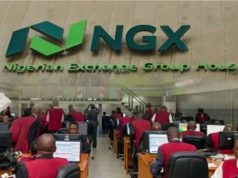APRIL 18, 2018 – African Eurobond issuers face more scrutiny in the wake of questions about the true extent of the debt loads of Zambia and the Republic of Congo.

Zambia’s dollar-bond yields climbed to the highest in more than a year last week as lenders including Bank of America Corp. and Nomura International Plc raised concerns about the government’s official numbers for foreign debt. The securities have lost 2.5 percent this year, making them the worst performers in sub-Saharan Africa in the Bloomberg Barclays Emerging Markets USD Sovereign Bond Index.
Bank of America said in an April 11 note that the continent’s second-biggest copper producer may have contracted $10 billion of new loans since 2015 that could increase its debt burden by the equivalent of 30 percent of gross domestic product within five years. While a default in the near-term is unlikely, “debt worries are justified,’’ said analysts Rukayat Yusuf and Andrew MacFarlane, who are based in London.
The government on Friday reiterated previous statements that its external debts were $8.7 billion at the end of December, or around a third of economic output.
‘Nothing to Hide’
The International Monetary Fund, which is in talks with Zambia and Republic of Congo about providing them loans, said this month that the latter needs to clarify exactly what it owes bilateral and commercial lenders. The central African oil producer’s 2029 Eurobond yields have climbed around 185 basis points this year to almost 11 percent.
Republic of Congo has “nothing to hide” and “all financial transactions or debts with its bilateral and multilateral partners have already been given to the IMF,” according to Communications Minister Thierry Moungalla.
The lack of transparency is often worse among oil exporters that haven’t disclosed whether they’ve pledged future shipments to service debts, according to Bloomberg Economics’ Mark Bohlund.
Debt Ratio
The problems aren’t reflective of Africa overall, but may make investors nervous about buying new bonds from the continent, he said. Fitch Ratings Ltd. said last week that refinancing risks in sub-Saharan Africa are rising and that the region’s average government debt ratio had increased about 20 percentage points in the past six years to more than 50 percent of GDP.
“In favorable market or economic conditions, investors lacking adequate transparency are inclined to assume credit fundamentals are in line with available information,” London-based Bohlund said. “But this bias often switches with an adverse shift in those conditions. Investors fear that the situation is worse than what available information suggests.”
Luckily for African borrowers, investors still crave higher yields at a time when those in the developed world remain near historical lows. Governments including Nigeria, Ivory Coast, Kenya and Egypt have sold more than $15 billion of Eurobonds so far in 2018, which is almost a full-year record for the continent.
‘Broad Brush’
Bank of America kept a market-weight, or neutral, recommendation for Zambia’s debt even as it said the chances of the IMF lending the government money anytime soon were slim. With yields of around 8 percent on Zambian Eurobonds, “an underweight position would be expensive given the loss of carry,’’ the analysts said.
“Although headlines about Zambia and Republic of Congo over the past couple of weeks have stirred memories of Mozambique’s hidden debt crisis, it would be a mistake to use a broad brush,’’ said Brett Rowley, a managing director at TCW Group Inc. in Los Angeles, which oversees $200 billion. A further sell-off of Zambian securities would probably present a buying opportunity, he said.
Still, the jitters over the two won’t help other borrowers, especially with investors less bullish about emerging markets, according to Gopaldas of Signal Risk. Average African dollar yields have already risen 67 basis points since early January to 6.33 percent, according to Standard Bank Group Ltd.
“Zambia and the Republic of Congo’s issues are more pronounced than those of other countries,’’ he said. “But there are others with unsavory politics and weak balance sheets who could easily lose market confidence. There are a lot of countries in the firing line.’’
SOURCE









